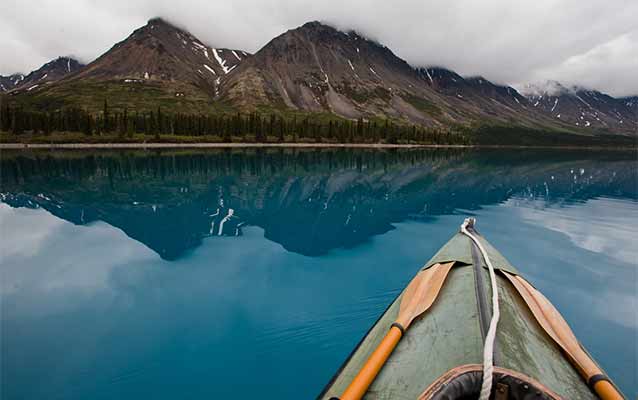Last updated: April 23, 2019
Lesson Plan
How Clear Is the Water?

- Grade Level:
- High School: Ninth Grade through Twelfth Grade
- Subject:
- Literacy and Language Arts,Math,Science,Social Studies
- Lesson Duration:
- 90 Minutes
- State Standards:
- CCSS.6-8.RST.3
HS-LS2 Ecosystems: Interactions, Energy, and Dynamics
HS-ESS2 Earths Systems
HS-ETS1 Engineering Design
Essential Question
What is turbidity and why is it important to understanding water quality?
Objective
Students will be able to explain the impact of water clarity on ecosystems functionality.
Students will create a product to analyze a solution.
Students will complete a lab report.
Background
Many marine or aquatic ecosystems depend on the quality or productivity of water. Water heavy with glacial sediment is often not highly productive because of the silt concentration and temperature, where salt water tends to be warmer and teeming with life. Students will be working in a local lake or ocean (or classroom if you don’t have a nearby body of water) to test its turbidity and analyze the life that resides in the body of water.
The final result should be a lab report and an engineered product that students have taken time to create and explain. This lesson fits well with an engineering project or into an ecology lesson. The goals are to engage students in the water near them,with the life around them and to have them think of creative solutions to sustain their environment.
Preparation
The materials with the PDF lesson are all inclusive. It is a presentation to start students off and spearhead the lesson. There is an activity manual with all the portions suggested in the procedure as a template for teachers to use and hand out.
-
How Clear is the Water? Activity Manual
The activity manual is a complete student handbook of materials to use while working through the idea of water quality. It includes a Turbidity Lab, Engineering process outline, Lab Write-up outline, and teacher notes and suggestions. This is the main portion of the activity. Download
-
Water Quality and You Presentation
Use this presentation to kick off your class exploration of our lesson, "How Many Salmon Are Enough? Download
Materials
Procedure
The goal behind the engineering portion is for students to realize a problem related to the turbidity of water, brainstorm a creative solution, and test a product they have created. There is a template to take students through the engineering process in the activity manual. With this activity, you can suggest students look at the ecology of an area, the plants and animals who live within a body of water, a better Secchi disk design that makes it easier to record, or a Secchi disk that tests for something other than turbidity (dissolved oxygen, pH, etc.). The idea is that students are using their brains to create something new. (2-3 50 min periods)
Vocabulary
ecosystem, turbidity, water quality, secchi disk
Assessment Materials
Students will create a lab report (to your specifications or the ones outlined in the lesson) for grading. Students will have a creatively engineered Secchi disk with explanation as to how it will work better and what its primary goal for data would be.
Additional Resources
Lake Clark National Park and Preserve uses their Southwest Alaska Network (SWAN) team to measure, among other things, turbidity, dissolved oxygen content, pH, and temperature. They have been gathering data to analyze, as the climate is changing, glaciers are melting, and populations of salmon are fluctuating. The park is keeping a close eye on the water in Lake Clark and it’s surrounding lakes in an attempt to understand the importance of changes.
Teachers with an interested group of students can encourage their students to field test their created Secchi disks, perfect their disks, and retest them. Students can also create a report on a career as a scientist working on water quality monitoring, as a hydrological technician, or other related field.
Students who are interested should check out the SWAN website. That can give them more information about the SWAN team, the projects that are ongoing, and a broader information base.
